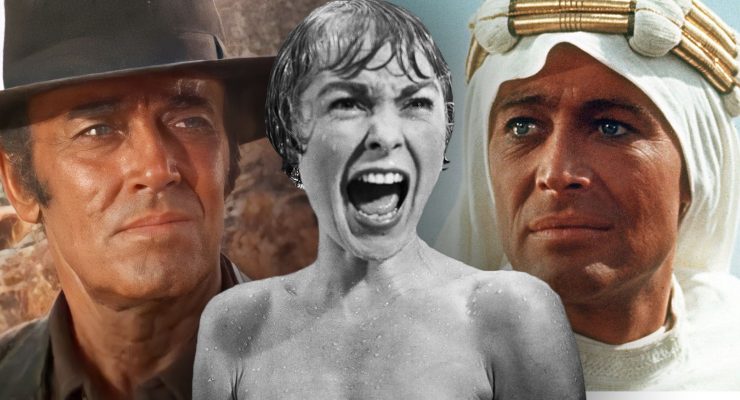Tom Jolliffe on whether the internet is killing the straight-to-home entertainment movie…
Going to the cinema has long been an escape. It’s an event. A special outing. When that was your only option of seeing a film it obviously limited the options the general public had. The business became bigger and bigger. Cinemas spread through towns and cities, widening the options further. Then TV allowed us to watch at home. With that, it also bought TV premieres. Films made especially to bypass the big screen (and indeed offer the option of serials, sitcoms, soaps etc).
Then came the video age. This saw an explosion. A whole new wave. Suddenly the quantity of available films become astronomical. This avenue of distribution meant film-makers could shoot something relatively cheaply and then aim directly for the home market. Alternatively it also gave a theatrical film a second bite of the cherry if it tanked at the box office (or indeed an added revenue on top of the theatrical takings). That evolved into DVD, and we now find ourselves in the Netflix era. Films going direct to streaming service. It has eliminated (almost) the need for physical form keepsakes like a DVD or a Blu-ray. Video stores are nearly extinct. Buying Blu-rays etc., physically in a store becomes increasingly difficult. Stores like HMV have been streamlined, whilst being undercut by online retailers means that physically walking into a shop to buy a DVD makes almost no sense.
The trouble is, in the 80’s and early 90’s, whilst a lot of theatrically bypassed entertainment was trashy and a bit bad, there was still often an attempt to compete. They were cheap, but back then the money stretched further. An action film would pile in a requisite amount of carnage and explosions. A horror film would still bring in solid FX guys and create enough physically revolting gore to satisfy fans. Big video stars like Dolph Lundgren would lead a picture like Dark Angel (I Come In Peace) or Showdown In Little Tokyo for example and they would sell very well on video (despite bombing in theatres). Films like these were loaded with action. Not in the same scale as something like Terminator 2: Judgment Day of course, but enough to leave the viewer (demanding some undemanding carnage) feeling satisfied enough destruction had been captured.
A low-budget studio specialising largely in action films, known as PM Entertainment was a playground for stunt specialists. The films didn’t promise much more than relentless action, and a lot of those delivered. Films starring video première stars like Gary Daniels and Don “The Dragon” Wilson that delivered excessive stunts, fights, car chases, explosions and with minimal fuss when it came to plot. Often low rent versions of bigger films, but still with a level of pride devoted to actually entertaining. Riot, Rage and Recoil, three films starring Gary Daniels, all from PM Entertainment, were full to the brim with insane action and stunts and barely a thread of plot between them. Riot was sort of a low rent re-working of Escape From New York, but it was a non-stop stunt-fest with genuinely imaginative set pieces. PM Entertainment have long since ceased as their spending model become unsustainable.
Now we find ourselves in an era where the internet is almost everywhere, and at high-speed. Movies stream instantly. The ability to host and share large volume files at such ease has lead to problems. One main problem is over saturation. If videos were produced en-mass in the 80’s. In the digital age where you can even shoot a film on your phone and distribute yourself means the net is absolutely bursting at the seems with film options. There’s almost too much out there. Indeed this happens in unison with a growing taste in cinema where the box office is becoming dangerously dependent on huge scale takings from comic book adaptations, sequels and reboots. It’s all about universe building now. The big money goes there and what filters down is now expected to filter into ever more far reaching corners. Ambitious upstarts like Cannon films aren’t appearing and throwing money around willy nilly any more. In the affluent 80’s and early 90’s, indie studios were popping up everywhere. Even notorious lobbyist Jack Abramoff tried his hand at movie producing (Lundgren vehicle, Red Scorpion) or the Wolf of Wall Street himself Jordan Belfort has produced films (a couple starring Hulk Hogan). It has happened in the US that money driven wall street guys, and also brokers and bankers in the UK too, have indulged that flight of fancy. It still happens but not to the same extent, although the 2008 economic crash played a part.
In addition piracy has played a significant part. The fact is, a lot of these films that bypass theatres have often been low rent action, horror or comedies which entertain viewers looking for a brief diversion. You will struggle to find anywhere in a high street to go and rent something. You don’t want to buy the latest Steven Seagal film, but maybe will watch once. So why rent when with the simplest of ease you can download it for nothing? The option is there, it’s easy and people are taking it. Then they complain the film is cheap. The trouble is, this creates an ongoing cycle. It doesn’t matter whether you’re Captain America or Steven Seagal in some dreadful three word titled sack of garbage. The film needs to turn a profit.
It has come to a point now where a film gets released for home entertainment and the star will take to social media and ask fans to support it and buy (or rent) it legally and officially. Scott Adkins as one example. His successful straight to video Undisputed and Ninja franchises have both suffered heavily from piracy. Boyka: Undisputed (the fourth in the franchise) almost didn’t happen because the previous film was pirated heavily. These are popular cult films with a reasonably sized following for their market, yet a fourth film with more than enough demand in wait, nearly didn’t happen because the takings don’t match up to the audience numbers.
Things haven’t reached a complete nadir of course. Guys like Seagal, Lundgren, Jean-Claude Van Damme et al, still work solidly. 10-15 years ago they’d get 3-4 million dollars a film. It doesn’t work that way any more. They can’t merely pre-sell a 10 million dollar budget film any more, simply with a title and mock poster with Seagal’s face on it. The money isn’t at hand like it was. Budgets are shrinking. Studios are now also going for the ensemble too. Pay these guys less and get 2-3 “names” in a picture in smaller roles, then spread them economically throughout the picture.
If you head into your local supermarket right now you may spot a film called Alien Hunter (also known as Welcome To The Willets) in the bargain charts. Dolph Lundgren is front and centre on the cover which seems to evoke some kind of unofficial Dark Angel sequel. It looks like an action film, with perhaps a sci-fi twist. The reality of the film is that it was probably shot for about a million tops. It’s a comedy horror and Dolph Lundgren cameos. He’s spread liberally throughout but with about 5 minutes screen time at the most. Misrepresentation or clever marketing? The former really and certainly sly but this is the norm and not the exception nowadays. As it happens, Alien Hunter is fairly entertaining. A slightly subversive comedy horror and the way Dolph is included is quite clever, but the film is wholly mis-sold on being “his” vehicle. Look at almost every Bruce Willis film of late. He’s done swathes of straight to video specials in the last decade. Almost all sold on being a Willis vehicle, but he’s a bit part player in the vast majority (and bored out of his skull mostly).
Streaming services now are developing their own premieres. Netflix, Amazon and the others all do it. Their own TV or films (Adam Sandler is signed to a Netflix premiere deal). To some extent that works around the piracy as almost all of us have a streaming service of some kind. Netflix hardly breaks the bank for example. Granted all of us probably have at least a couple of Netflix leeches. However if you pay your subscription you get access to everything on there. If you have Netflix you don’t need to go and pirate Okja to watch it. It’s right there. The notion of distributing to DVD and Blu-ray now seems moot. The trouble is, these avenues can become saturated. Anyone can release a film on Amazon for example. There are plenty of open online distribution options.
Studios specialising in lower budget fare now realise that they can do these films on the cheap and when I say cheap, I mean cheap. A couple of million budget in 1990 would have got you a decent bang for your buck. Inflation is a bitch though, and studios are trimming budgets right down. You don’t get bang for your bucks any more unless you spend a lot of bucks. I’ve made films myself and almost shat a lung upon hearing the price of locations in the UK (particularly London). It’s eye-watering. If you want to cross every T and dot every I then even a solid million bucks won’t get you very far with a feature nowadays. However, studios care not. Get your “name” actor(s). ‘Is it action? Right…okay…how much will the weapons and FX cost? Really? That much? Lets just use cheap replicas and quickly do all the squibs and explosions half-heartedly in post. The audience won’t care.’ That’s the mentality. Where PM Entertainment, 20 years ago, would obliterate 50 cars, have a dozen explosions and 90 minutes of relentless action, the majority of most video action films will have very little, and an absolute bare minimum in practical effects.
With piracy and increasing changes in distribution methods and a rise in YouTube channels/vloggers etc, it means tastes are changing and everyone has the ability to find an audience themselves. Distributors are essentially middle men. As they become more obsolete in the selling part, it stands to reason that the ease of which you can send a film out to the web means that people will do it even more cheaply. Audiences watch. Rather than flat fees to rent or buy, you’re paying through the ads, or maybe through your subscription fee to Amazon etc. The trouble is, with such ease, standards and pride can drop. You don’t have to work hard to do this and furthermore it means that people willing to invest in films will become fewer and farther between. I do wonder even how long it’ll be before someone like Seagal or Lundgren just goes straight to YouTube. If you find a niche as a Vlogger you can earn insane amounts. The viewer pays nothing to watch the video (aside from their supplier bill I suppose). Maybe even Netflix etc. will feel the danger eventually (they’ll certainly struggle to validate too many price increases). Although to Netflix’s credit, they do invest plenty of money into their premieres, knowing that it’s covered and they’re relatively safe from the piracy side. Their bottom line is their subscribers, none of whom need to pirate it to watch Okja or the latest Sandler film.
As a reviewer here I’ve seen first hand, in 7 years of watching screeners, a general lowering of standards and budgets in straight to VOD films. I’ve seen a major shift from receiving DVD screeners to almost always watching screeners online. It’s all looking progressively cheaper in these markets. On a positive side it means passionate young filmmakers with no money have been able to shoot something and find distribution. Like never before, that’s open. It’s good if there’s some talent, passion and vision there. That’s not always the case. It almost doesn’t matter what you shoot on now. Anyone can edit at home on easy to use software. I can’t say I don’t miss those days when a video premiere was shot on 35mm with a big crew, the cover star actually leading the film, and enough explosions to cover the wafer thin plot. Film at this level has always been a crap shoot. A gamble. The chances of finding a nugget of gold are declining though and even many of the bad ones even lack a laughable, Ed Wood-esque charm.
Tom Jolliffe











